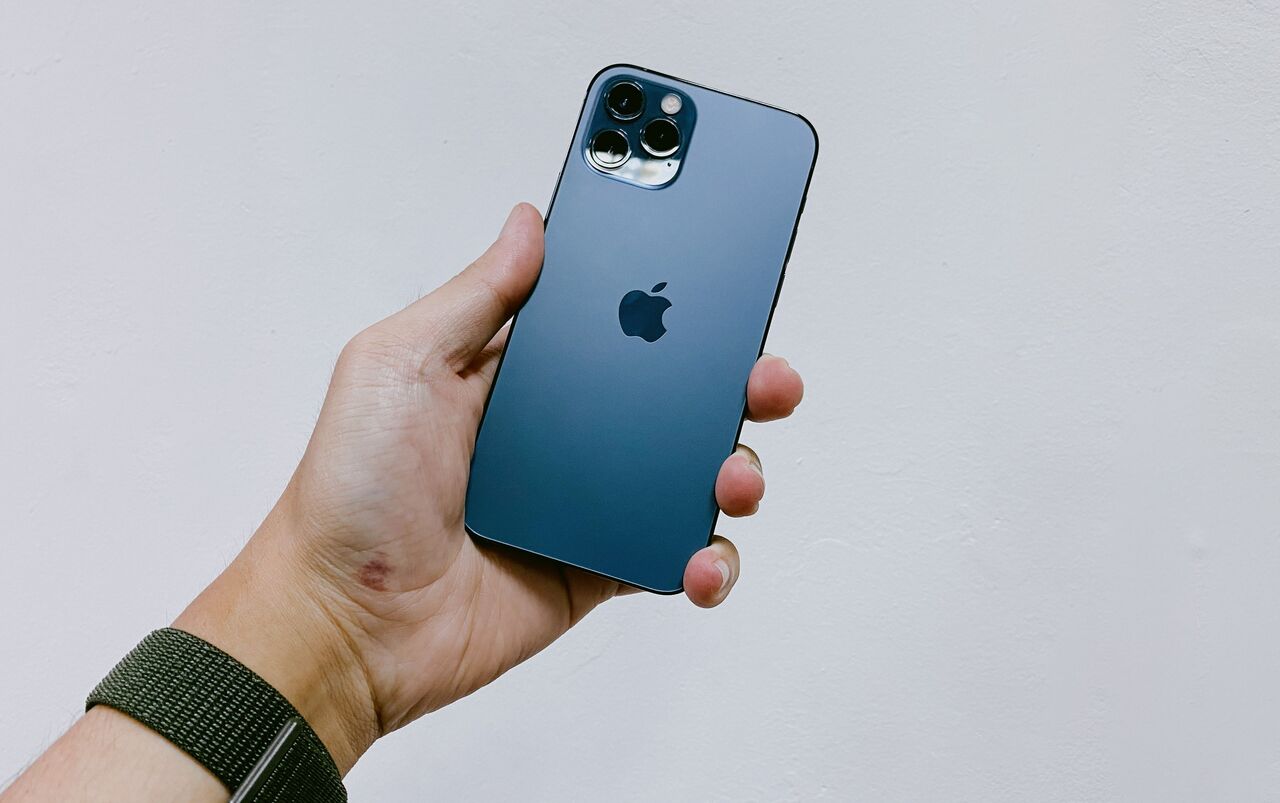Jak přenést soubory z telefonu do počítače: 4 bezplatné metody - Filemail

V tomto článku se budeme zabývat tím, jak přenést soubory z telefonu do počítače. Projdeme si 4 metody, které zahrnují:
- Přenos souborů pomocí USB kabelu
- Přenos souborů pomocí karty SD
- Přenos souborů bezdrátově
- Přenos souborů pomocí cloudového řešení
Úvod
V dnešní době používáme telefony téměř ke všemu.
Pořizování fotografií, videí, ukládání důležitých dokumentů, sociální sítě, přehrávání hudby – prostě vše, co si jen dokážete představit. Někteří z nás je dokonce používají k volání jiné osoby.
Kvůli této závislosti na telefonech jako multifunkčních zařízeních si nakonec uložíte mnoho souborů do svého mobilního telefonu.
Co ale dělat, když potřebujete odeslat soubory z telefonu do počítače? Bez ohledu na to, jak velkou kapacitu úložiště váš telefon má, nakonec budete muset přenést soubory z telefonu do počítače.
Podívejme se na čtyři způsoby, jak přenést soubory z telefonu do počítače (PC) nebo Macu.

1. Jak přenést soubory z telefonu do počítače pomocí USB kabelu?
Přenos pomocí USB kabelu je zdaleka nejoblíbenější metodou pro mnoho lidí. A proč by tomu tak nemělo být?
Stačí pouze připojit telefon k počítači, provést pár jednoduchých kroků a hotovo!
Nyní můžete odesílat i přijímat soubory prostřednictvím obou zařízení.
1.1 Odesílání souborů z telefonu do počítače se systémem Windows
Jak přenášet soubory z Androidu do počítače pomocí USB kabelu?
Podívejme se, jak můžete přenášet soubory z vašeho Android telefonu nebo iPhonu do počítače se systémem Windows.
1. Připojte telefon k počítači pomocí USB kabelu.
2. V oznamovací liště se zobrazí zpráva o připojení USB. Ujistěte se, že jste nastavili režim „přenos souborů“.
3. Dvakrát klikněte na „Můj počítač“ a v sekci Zařízení a ovladače se zobrazí váš telefon.
4. Nyní můžete přesouvat soubory z mobilu do složky na vašem počítači.
Jak přenést soubory z iPhonu do počítače pomocí kabelu USB?
V případě iPhonů budete muset vynaložit trochu více úsilí.
1. Nejprve se ujistěte, že máte v počítači s Windows nainstalovanou nejnovější verzi iTunes.
2. Propojte iPhone s počítačem pomocí kabelu lightning na USB.
3. Otevřete aplikaci iTunes v zařízení se systémem Windows. Přejděte do levého horního rohu obrazovky, kde uvidíte kartu „Zařízení“. Klikněte na ni a poté klikněte na „Další“ v sekci Sdílení souborů.
4. Vyberte cílové aplikace. iTunes vám umožní vybrat, které soubory z těchto aplikací můžete odeslat do počítače.
5. Po výběru souborů stiskněte tlačítko „Save To“, čímž zahájíte přenos dat do počítače. Vše je hotovo!

1.2 Přenos souborů ze smartphonu do počítače Mac
Jak přenášet soubory z telefonu se systémem Android do počítače Mac pomocí kabelu USB?
Rozhodně to není tak jednoduché jako přesouvání dokumentů mezi zařízeními se systémem Android a Windows. Ale přesto není tento proces nijak příliš složitý.
1. Prvním krokem je instalace aplikace Android File Transfer do počítače Mac. Aplikace by se měla automaticky spustit a nainstalovat.
2. Nyní stačí připojit telefon k zařízení Apple pomocí USB kabelu.
3. Procházejte obsah telefonu a vyberte požadované soubory k přenosu do složky v počítači Mac.
Jak přenášet soubory z iPhonu do Macu pomocí kabelu USB?
Při odesílání souborů z iPhonu do počítače Mac postupujte podle následujících kroků:
1. Připojte obě zařízení Apple pomocí kabelu Lightning k USB.
2. Aplikace iTunes se otevře automaticky. Pokud ne, spusťte ji ručně.
3. V levém horním rohu klikněte na ikonu iPhone. Tím se otevře nové okno.
4. Ve spodní části najdete informace o úložišti vašeho zařízení. Uvidíte sekce pro zvukové soubory, fotografie a videa, aplikace, dokumenty a další položky.
5. Klikněte na příslušnou sekci a začněte odesílat soubory z iPhonu do Macu.
1.3 Výhody a nevýhody používání USB kabelu k přenosu souborů
Klady | Nevýhody |
| Je to rychlé a snadné. | Budete muset být fyzicky blízko počítače, nebo maximálně tak daleko, jak umožní délka USB kabelu. |
| Při přenosu souborů pomocí USB kabelu není zapotřebí internetové připojení. | |
| USB kabely jsou poměrně levné. |

2. Jak přenést soubory ze smartphonu do počítače pomocí karty SD?
I když jsou malé, karty SD jsou skutečně výkonné. Na jednom čipu pojmou od 64 MB do 1 TB dat.
Stejně jako USB kabely jsou karty SD hojně využívaným prostředkem pro přenos dat. Vše, co potřebujete, je slot pro kartu SD ve vašem počítači.
2.1 Jak přenést soubory z telefonu se systémem Android do počítače se systémem Windows nebo Mac pomocí karty SD?
Pokud váš telefon se systémem Android ukládá všechny soubory na micro-SD kartu, bude přenos souborů snadný.
Postupujte podle následujících kroků:
1. Pokud máte soubory uložené v telefonu, vložte SD kartu a přeneste na ni požadované soubory.
2. Vyjměte micro-SD kartu z telefonu a vložte ji do čtečky karet.
3. Vložte čtečku karet do slotu pro paměťovou kartu ve vašem počítači.
4. Nyní můžete jednoduše kopírovat a vkládat soubory z karty do počítače PC nebo Mac. Ano, je to tak jednoduché.
2.2 Jak přenést soubory z iPhonu do počítačů se systémem Windows a Mac pomocí karty SD?
iPhony nemají slot pro kartu SD. Přenos souborů z iPhonu do počítače proto nebude tak rychlý. K zahájení procesu budete také potřebovat další nástroj ve formě adaptéru Lightning na kartu SD.
1. Po připojení Lightning portu k iPhonu vložte paměťovou kartu do čtečky karet.
2. Přejděte k souboru, který chcete přenést, například k fotografii, kterou chcete odeslat do počítače.
3. Vyberte daný soubor a zvolte možnost Sdílet.
4. Dále klepněte na možnost Uložit do souborů. V tuto chvíli vám telefon zobrazí dostupné možnosti. Vyberte SD kartu, která se obvykle zobrazuje jako „No Name“.
5. Poté vyberte složku, do které chcete soubor uložit.
6. Pro dokončení přenosu vysuňte SD kartu po uložení souborů. Vložte ji do stolního počítače nebo notebooku. Nyní budete moci přetahovat soubory z karty do zařízení.
2.3 Výhody a nevýhody používání karet SD pro přenos souborů
Klady | Nevýhody |
| U zařízení se systémem Android, která mají slot pro micro-SD kartu, tato metoda výrazně šetří čas. | Pravděpodobně nejde o ideální metodu pro uživatele iPhonu, protože budete muset zakoupit adaptér z Lightning na SD kartu. |
| Implementace je jednoduchá a můžete přenášet velké soubory během několika minut. | Proces je pomalý a zahrnuje mnoho kroků. |
3. Jak bezdrátově odesílat soubory z telefonu do počítače?
Pokud se domníváte, že používání kabelových připojení pro odesílání a přijímání souborů je zastaralé, proč nezkusit bezdrátový přenos?
Vyhnete se tak komplikacím spojeným s kabely nebo kartami SD, když soubory z telefonu do počítače přenesete pomocí Bluetooth nebo Wi-Fi.

3.1 Jak odesílat soubory z telefonu do počítače pomocí Bluetooth?
Odesílání souborů z telefonu se systémem Android do počítače se systémem Windows pomocí Bluetooth
1. Přejděte do nastavení telefonu a klepněte na Bluetooth. Zapněte jej a ujistěte se, že je viditelný pro okolní zařízení.
2. Na vašem počítači se systémem Windows otevřete nabídku Start. Klikněte na ozubené kolo vlevo pro vstup do Nastavení. Do vyhledávacího pole napište „Bluetooth“ a klikněte na příslušnou možnost, když se objeví v rozevíracím seznamu.
3. Na pravé straně okna uvidíte možnost odeslat nebo přijímat soubory přes Bluetooth. Klikněte na ni pro otevření průvodce přenosem souborů.
4. Nejprve vyberte možnost „Přijmout soubory“, a poté z dostupného seznamu zařízení vyberte váš mobilní telefon. Následně klikněte na „Další“.
5. Nyní odemkněte telefon a dlouhým stiskem vyberte soubory, které chcete přenést. Poté vyberte možnost „Sdílet“ a zvolte Bluetooth.
6. Ze seznamu „dostupných zařízení“ na vašem telefonu vyberte váš počítač.
7. Na vašem počítači vyberte složku, kam chcete uložit přijatý soubor, a poté klikněte na „Dokončit“ pro dokončení procesu.
Odesílání souborů z telefonu se systémem Android do Macu pomocí Bluetooth
1. Zapněte Bluetooth na svém telefonu se systémem Android a nastavte jej na viditelný režim.
2. Na vašem Macu přejděte do Nastavení → Bluetooth a zapněte jej.
3. Na telefonu klepněte na „Spárovat“, když se váš Mac objeví mezi dostupnými zařízeními.
4. Vraťte se na Mac. V okně Předvoleb klikněte na Sdílení a zaškrtněte políčko u možnosti Sdílení přes Bluetooth. Vyberte preferovanou složku pro přijaté soubory a jste připraveni začít sdílet.
Když odesíláte dokumenty z Androidu, na Macu se objeví oznámení. Po stisknutí tlačítka „Přijmout“ budou vaše soubory přímo uloženy do vybrané složky.

3.2 Jak přenést soubory z iPhonu do Macu pomocí Apple Airdrop?
Ačkoli váš iPhone nemůže odesílat soubory přes Bluetooth, má v nabídce něco jiného.
Airdrop je speciální exkluzivní funkce vytvořená pro zařízení Apple, která umožňuje snadné sdílení souborů. Navíc funguje jak přes Bluetooth, tak přes Wi-Fi.
Postupujte podle následujících kroků pro sdílení souborů pomocí Airdrop:
1. V Ovládacím centru na iPhonu klepněte na ikonu Airdrop a aktivujte ji.
2. Otevřete aplikaci, která obsahuje soubory, které chcete sdílet, například fotografie, a vyberte všechny obrázky, které chcete odeslat do Macu.
3. Klepněte na tlačítko Sdílet v dolní části obrazovky, poté vyberte váš Mac ze seznamu dostupných zařízení. A je to!
Je to opravdu tak jednoduché!

3.3 Jak přenést soubory ze smartphonu do počítače pomocí Wi-Fi bez internetu?
Přijímání souborů z telefonu se systémem Android nebo iPhonu do počítače se systémem Windows pomocí Wi-Fi routeru.
Máte Wi‑Fi router?
Skvělé! Nyní můžete začít odesílat a přijímat soubory mezi zařízeními.
Než začnete, musíte si nainstalovat jakoukoli FTP aplikaci třetí strany na váš Android nebo iOS telefon, aby vše fungovalo.
A protože Windows nepodporuje Airdrop, nemůžete pomocí Bluetooth odesílat soubory z iPhonu do počítače se systémem Windows. Proto tuto metodu můžete použít i pro bezdrátové sdílení souborů z iPhonu do PC. K tomu:
1. Přejděte do nastavení internetu na vašem telefonu.
2. Vyhledejte funkci Wi‑Fi hotspot v nastavení hotspotu a tetheringu a zapněte ji.
3. Otevřete FTP aplikaci, která vám zobrazí URL adresu.
4. Na vašem počítači otevřete „Můj počítač“.
5. Do adresního řádku nahoře zadejte URL adresu z aplikace ve vašem telefonu. Vaše úložiště Android se vám nyní zobrazí na počítači.
Přenášení souborů z vašeho telefonu se systémem Android do počítače Mac pomocí Wi‑Fi routeru
Stejnou metodu sdílení úložiště přes FTP můžete využít i na Macu. Budete však muset nainstalovat aplikaci podporující FTP i na váš počítač.
Zkopírujte URL adresu ze svého zařízení Android a vložte ji do FTP aplikace na vašem Macu. Vaše telefonní úložiště se vám během okamžiku zobrazí na obrazovce.
3.4 Výhody a nevýhody bezdrátového odesílání souborů
Klady | Nevýhody |
| Už nemusíte řešit kabely. Stačí několik klepnutí a můžete se připojit k libovolnému zařízení. | Nelze sdílet soubory mezi iPhonem a počítačem se systémem Windows pomocí Bluetooth. |
| Můžete se připojit k více zařízením současně. | Bezdrátový přenos nikdy není tak rychlý jako přenos přes kabel. |
| Airdrop usnadňuje sdílení souborů neuvěřitelně jednoduše a pohodlně. | Budete muset nainstalovat FTP aplikaci na váš telefon. |
| Airdrop nefunguje na zařízeních s Androidem a Windows. | |
| Airdrop vyžaduje, aby byly zapnuté jak Wi-Fi, tak Bluetooth. | |
| Odesílací i přijímací zařízení musí být připojena ke stejné Wi-Fi síti, což omezuje vzdálenost mezi nimi. |

4. Jak sdílet soubory z vašeho telefonu do počítače pomocí cloudových poskytovatelů
Máte-li přístup k internetu, můžete využít jeden z nejefektivnějších způsobů přenosu souborů.
Hovoříme o sdílení souborů prostřednictvím cloudu.
Jak to funguje:
1. Stáhněte si příslušné cloudové aplikace pro sdílení a ukládání souborů do obou zařízení (telefon a počítač). Mezi oblíbené patří například Google Drive, iCloud, Microsoft OneDrive a Dropbox.
2. Umístěte všechny soubory, které chcete sdílet, do složek příslušné cloudové aplikace. Nastavte automatickou synchronizaci na vašem telefonu i počítači.
3. Nyní můžete sdílet soubory odkudkoli, kdykoli a s kýmkoli.
Jednoduché, že?
4.1 Výhody a nevýhody bezdrátového sdílení souborů
Klady | Nevýhody |
| Mnoho zařízení již využívá cloudové úložiště a metody sdílení souborů. Google Pixel telefony jsou dobrým příkladem. | Bez internetu není cloudové sdílení možné. |
| Každý soubor na cloudovém serveru má unikátní URL adresu, kterou můžete sdílet s kýmkoli, a kdokoliv k ní může přistoupit odkudkoli na světě. | Bohužel bez spolehlivého internetového připojení nelze soubory odesílat ani přijímat. Navíc tyto služby mohou vyžadovat dokoupení dalšího úložného prostoru. |
| U některých cloudových řešení neexistuje žádné omezení, kolik můžete odeslat. Může se vám vyčerpat místo, ale vždy si můžete dokoupit další. | Bohužel někteří poskytovatelé cloudových služeb neumožňují odesílání velmi velkých souborů. |

5. Snadný přenos souborů z vašeho telefonu do počítače pomocí Filemail
V další části našeho článku o přenosu souborů z telefonu do počítače se podíváme na Filemail.
Pomocí našich webových stránek nebo multiplatformních aplikací můžete odesílat i přijímat soubory na jakékoli platformě – ať už jde o PC, Mac, Android nebo iPhone.
Vše, co musíte udělat, je připojit cílové soubory, zadat e-mailovou adresu příjemce a stisknout tlačítko Odeslat.
Už žádná nekonečná sledování výukových videí, abyste zjistili, jak funguje nahrávání. Soubory odešlete a příjemci obdrží odkaz do svého e-mailu. Není třeba se dlouze registrovat ani sdílet osobní údaje. Filemail vám umožní přenášet cokoli a zároveň zajistí bezpečnost a důvěrnost vašich dat.
A tady je háček: Je to ZDARMA! No, vlastně to není háček. Problém je v tom, že naše bezplatná služba není tak komplexní jako placené plány.
Sdílejte soubory libovolné velikosti, získejte 1 TB úložného prostoru a další výhody.



